#RotaryEngine
Mazda Rotary Engine Returning on MX-30
After years of speculation that Mazda would someday bring back rotary-powered performance, the company is finally willing to confirm that our collective hope was not in vain. However, there will be no rear-drive RX model spinning up its triangular Wankel beyond 8,000 rpm because piston-free rotary engines are difficult to seal. Despite making oodles of power for their size, they’re not well optimized for everyday driving and tend to offer the kind of fuel economy and emissions that get regulators’ panties in a twist.
Given the circumstances, Mazda’s rotary will be returning as a range extender for the MX-30 PHEV.
Mazda Patent Should Help Keep Rotary Hopes Alive
Rotary engine fans are an odd bunch, but boy, are they patient. Say “maybe in the next decade” to them and they’ll pass their time doing whatever the hell rotary fans do in their off hours until it’s finally time for a resurrection of the pistonless internal combustion engine.
Over at Mazda, it’s been a long wait. Rumors of a successor to the RX-8, which bit the dust in 2012, have circulated for years, but company brass have remained focused on new crossovers, more efficient Skyactiv engines, and, more recently, electrification. And yet the automaker refuses to close the door on a rotary revival, keeping hope alive for those waiting for a new RX- product.
This latest patent from Mazda should tide them over.
In With the Old, In With the New: Mazda's Rotary Return Might Leave RX-7/RX-8 Fans Disappointed
Mazda, an automaker that lacks even the mildest of hybrid vehicles, has announced a plan to change its gas-obsessed image. In doing so, the “fun” Japanese brand will return a novel internal combustion engine to the automotive landscape: the rotary engine.
We’ve talked up this possibility ad nauseum in the past, but the plan’s now official. Announced Tuesday, Mazda will add a rotary engine as a range extender for its electrification program, with the first rotary-equipped hybrid production vehicle appearing in 2020.
Rare Rides: NSU's New Way to Wankel - the Spider From 1965 (Part IV)
Part III of this Rare Rides series explored how NSU readied itself to re-enter the car market and end its longstanding production tie-up with Fiat. Shortly after the painful divorce from the Italians, NSU’s first rotary-powered car was ready.
Rare Rides: NSU's New Way to Wankel - the Spider From 1965 (Part III)
Part II of the NSU story gave some color to the company’s first bout of financial trouble, and how it passed on a Ferdinand Porsche design that would go on to become the Volkswagen Beetle a few years later.
As we left off last time, NSU and Fiat were locked in a longstanding disagreement about who could brand which cars in which way.
Rare Rides: NSU's New Way to Wankel - the Spider From 1965 (Part I)
Back in the 1960s, a little German car company decided to spend a lot of money to create a new-to-them type of engine. The car company in question was NSU, and the engine that cost them so much money was a Wankel.
In a first-ever for the Rare Rides series, this will be a four-part entry. Come along as we explore the NSU brand and the Spider; a tiny roadster which ended up almost entirely responsible for the demise of its parent company.
Yes, There's a Rotary Engine Coming to a Mazda Vehicle Next Year, but It's Not the Main Event
If you’re prone to daydreaming about slinky roadsters and curvaceous coupes powered by a high-revving rotary engine, this news might disappoint.
Mazda, one of a dwindling handful of automakers not in possession of an electric (or even hybrid) vehicle, plans to change that status next year with the introduction of a small battery-powered car. Coming along for the ride — at least in one variant — is a rotary gas engine designed to go unnoticed by the driver.
Mazda's Rotary Engine Might Appear in a New Toyota Project, But You're Going to Be Disappointed
With news of Mazda’s rotary engine development surfacing throughout the past year, we’ve been actively following its progress. Of course, die-hard rotary fans have been less enthused, as all information points to the powerplant continuing on as a gas-driven range extender for EVs — rather than the heart and soul of a high-performance coupe. It could still happen, but it’ll be a long wait.
The prognosis recently became more interesting, though enthusiasts aren’t likely to feel any better about it. Toyota is hinting that Mazda’s rotary could be the perfect solution to a concept vehicle it’s currently working on. Unfortunately, that unit is the e-Palette — an autonomous box riding atop the company’s new battery electric platform, with more applications as a mobile store than as a personal conveyance.
The Rotary's Returning, Says Mazda, But There's Some Things to Take Care of First
For five years now, Mazda has hinted, then promised, then reassured us that a rotary-powered sports car will return to the company’s lineup, ready to fill a spot left vacant by the departing RX-8 in 2012.
We’re still waiting and, Mazda now informs us, we’ll be waiting quite a bit longer. While the cylinderless gasoline engine holds promise as a range-extender in electrified vehicles (something powertrain chief Mitsuo Hitomi feels is a definite future use for the powerplant), that’s not something Wankel fans want to hear. They want to spin that engine up to eleventy billion rpm and drop the clutch.
It’ll happen, says Mazda’s senior managing executive officer, Kiyoshi Fujiwara, but something’s cropped up that pushed the rotary’s return to the back burner. That thing is the company’s gasoline compression ignition engine, the Skyactiv-X.
Mazda's Rotary Engine Returns for 2019 - Just Not How You Had Hoped
Mazda never gave up on the rotary engine. Despite putting it on hiatus after the RX-8 ended production in 2012, the automaker has continued developing rotary-based solutions to achieve locomotion. There has even been a longstanding promise that a Wankel motor would eventually return in a future sports car that would trump the MX-5 in outright performance. However, Mazda never mentioned when the world could expect to see another rotary in action.
Then Mitsuo Hitomi, Mazda’s global powertrain head, gave us a timeline to sink our teeth into. The year of the Wankel will be 2019, but it’s not coming back how you imagined. Instead of dropping it into a high-revving performance vehicle, Mazda thinks a rotary would make the perfect gas-powered range extender for its upcoming electric vehicle.
Junkyard Find: 1983 Mazda RX-7
First-generation RX-7s aren’t as common in self-service wrecking yards as they were five years ago, but it’s not hard to find a couple in a typical large yard in the Los Angeles or San Francisco areas. Most of the time I don’t photograph these cars, but we’ve seen this ’79, this ’79, this ’80, and this ’85 so far in this series, and now we’ve got today’s beat-looking but low-mile ’83 from Northern California.
Mazda RX Successor Gone To The Big Junkyard In The Sky(activ)
What you’re seeing above isn’t the rendered visage of the next Mazda rotary sports car, but the leaked fascia of the new CX-5 crossover. Better get used to it.
Mazda Boss Scuttles Rotary Revival
Plans for a ressurected rotary engine appear to have hit a snag with Mazda CEO Masa-michi Kogai claiming that the required volumes for commercial viability are unrealistic.
Junkyard Find: 1979 Mazda RX-7
First-gen Mazda RX-7s aren’t difficult to find in self-service wrecking yards (we just saw this ’80 with Flashdance-grade custom paint and this fairly solid ’85), and so most of them don’t make it into this series. During my recent trip to California for the biggest 24 Hours of LeMons race in history, I stopped at one of my favorite East Bay wrecking yards and found this utterly rust-free example of one of the few bright spots of the Malaise Era.
Mazda Boss Reveals More About Rotary Range Extender
The rotary engine and Mazda have had a tumultuus, on-and-off relationship that rivals an Old Hollywood marriage. Market conditions and government regulations have made mass production of the rotary a constant challenge, and the death of the Mazda RX-8 looked like the final nail in the Wankel’s coffin.







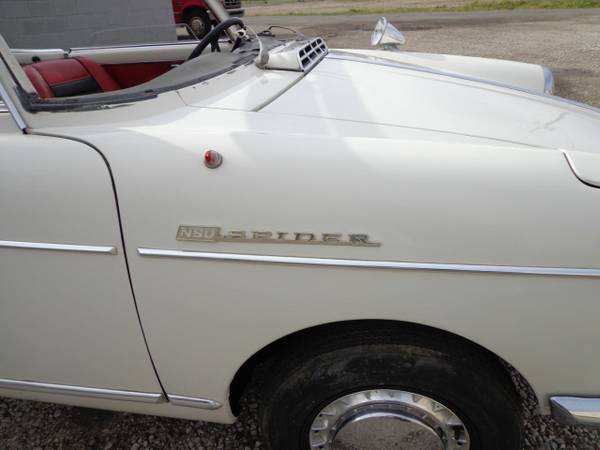
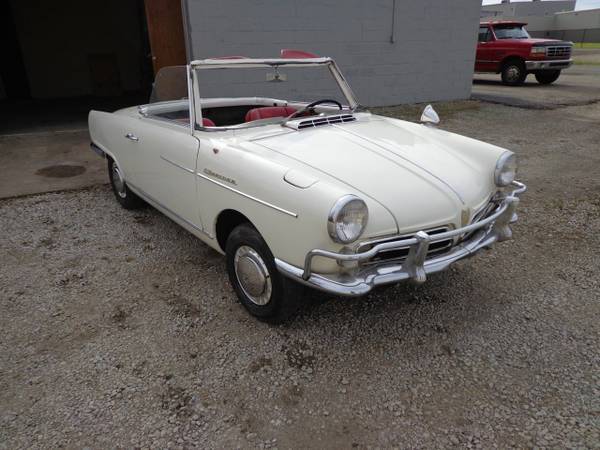



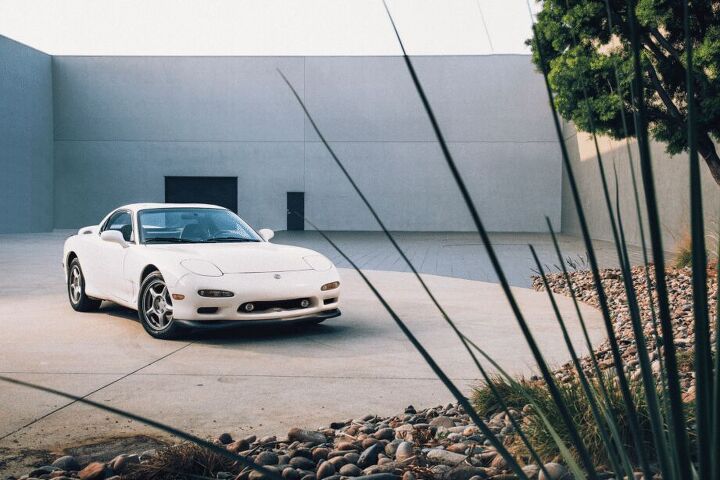
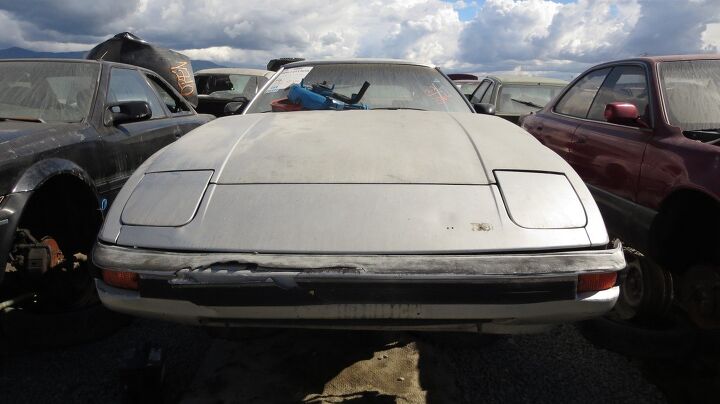



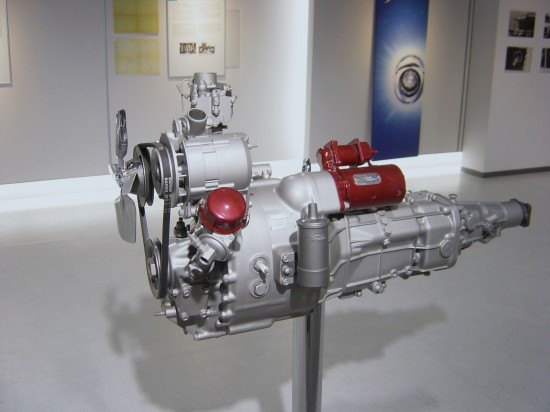












Recent Comments